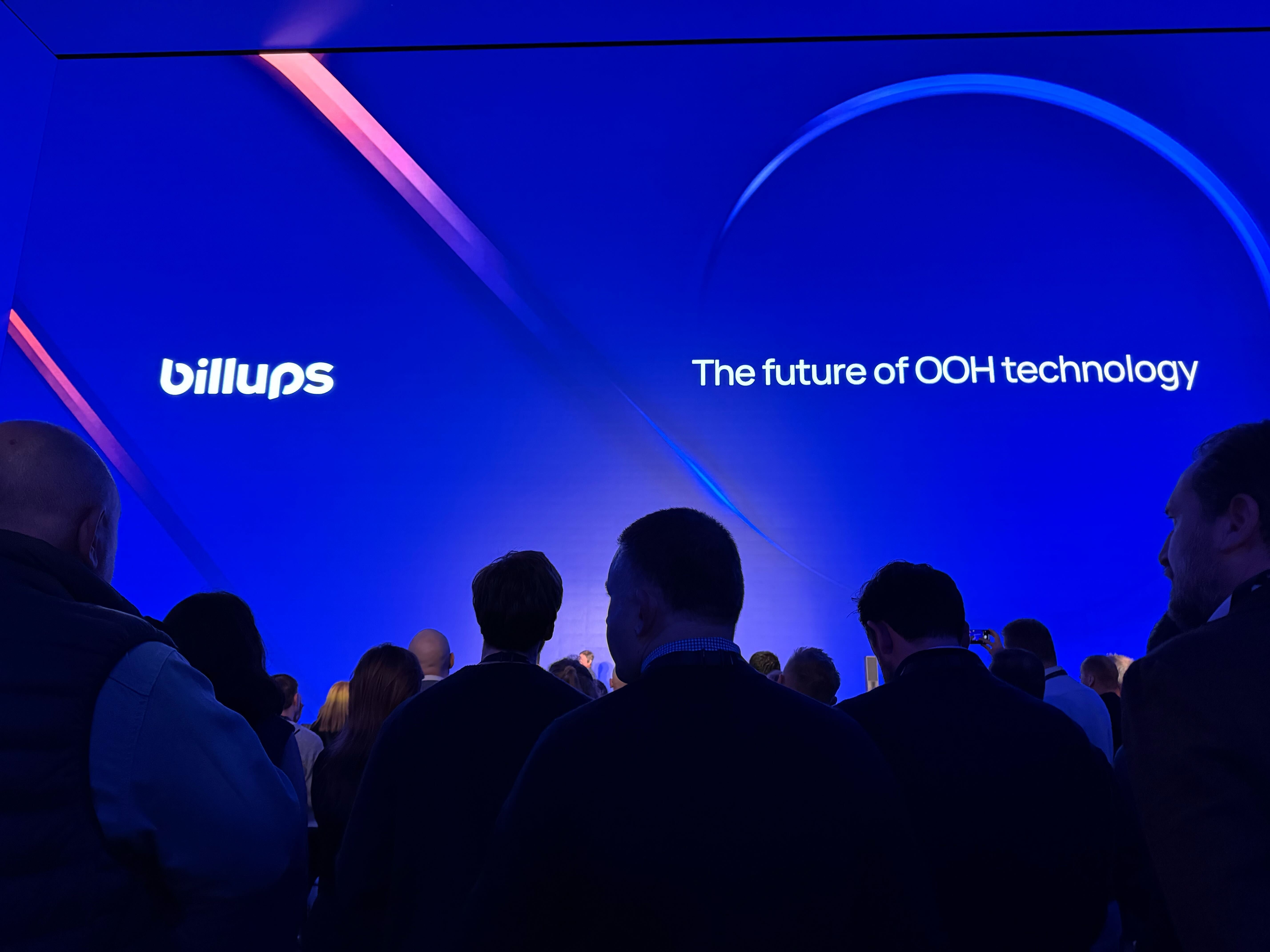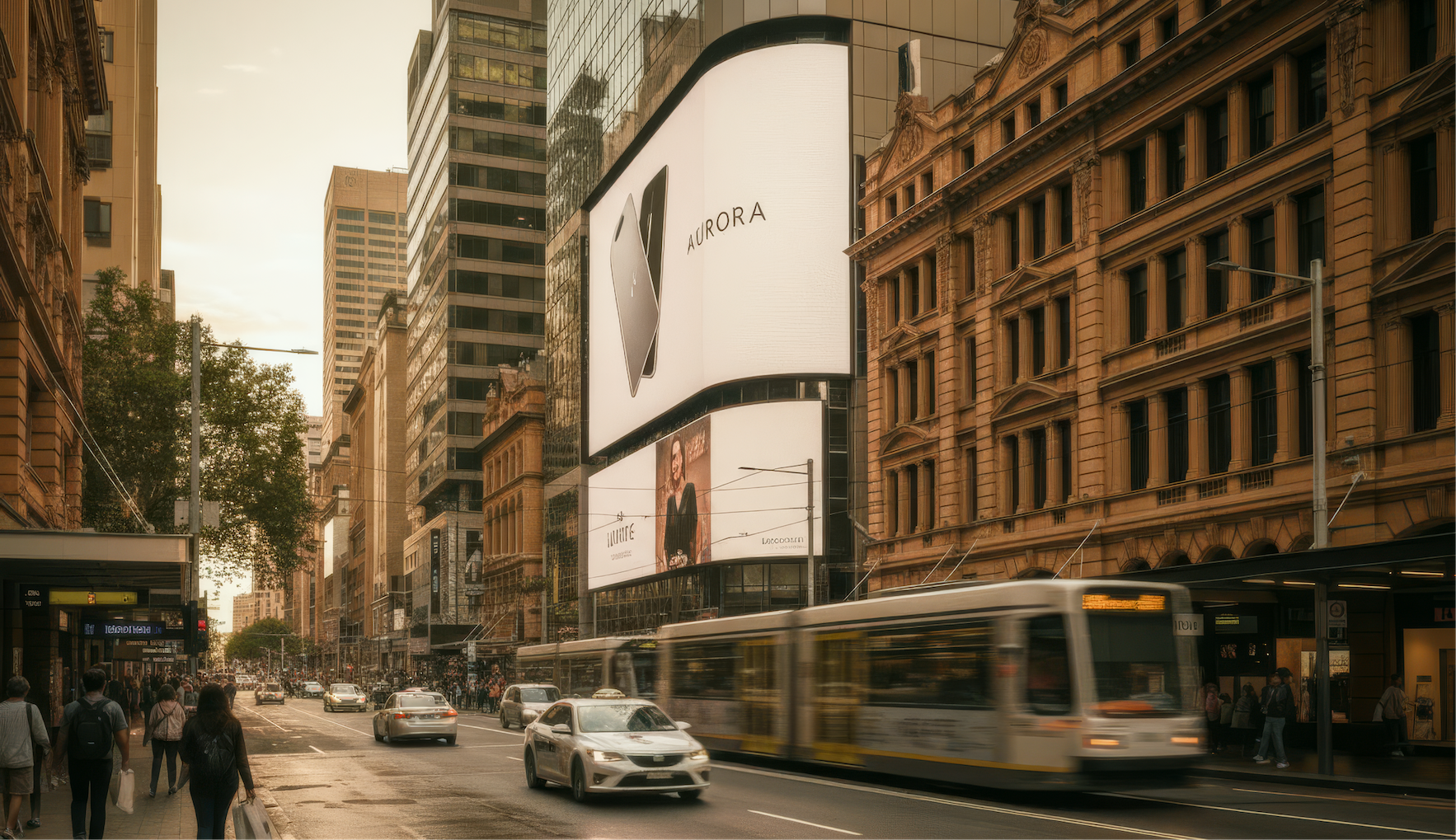OOH Advertising in Australia and New Zealand: An Overview
.png)
OOH Advertising in Australia and New Zealand: An Overview
Out-of-Home (OOH) advertising in Australia and New Zealand is evolving rapidly, powered by digital innovation and a deep cultural connection to outdoor living. As these markets embrace new technologies and creative approaches, brands have a unique opportunity to connect with diverse, engaged audiences in ways that resonate at the local and national levels. This overview is designed for brand owners and agencies considering expansion in these markets, providing actionable insights and strategic guidance.
In this article, we explore the OOH landscape across Australia and New Zealand, featuring insights from billups’ Directors of Client Development, Rohan Prasad and Ben Poole, both with extensive experience in the OOH sector and deep expertise in the ANZ market. We’ll highlight key trends, challenges, and opportunities, and share practical advice for brands ready to make their mark in these vibrant markets.
Key takeaways
- Booming growth: The OOH sector is thriving with 11% growth in Q1 2025 from Q1 2024, driven by digital transformation, collaboration, and a strong affinity for outdoor spaces.
- Digitisation dominance: Digital assets now account for over 75% of OOH revenue, enabling flexible, hyper-local targeting and dynamic creative.
- Cultural relevance: Campaigns that reflect the unique identities and values of Australians and New Zealanders deliver stronger results.
- Market challenges: Economic pressures and fast turnarounds require creative, cost-effective, and localised strategies.
- Opportunities for brands: Leveraging data, technology, and local expertise helps brands cut through and connect.
.png)
Table of contents
- The OOH advertising landscape
- Audience profiles and behaviors
- Key trends and opportunities
- Market challenges
- How brands can win in Australia and New Zealand
- Sector spotlights
- Conclusion
- About billups
The OOH advertising landscape
Australia and New Zealand’s OOH markets are shaped by geography, culture, and technological advancements. Both countries are highly urbanised, with over 86% of Australians and 84% of New Zealanders residing in cities (World Bank), and major population centers such as Sydney, Melbourne, and Auckland.
OOH advertising reaches 97% of Australians weekly (OMA) and in New Zealand, it reaches 80% of urban dwellers aged 18+ daily (New Zealand Marketing Magazine), making it a powerful channel for brands seeking to build awareness and drive action. Prasad emphasises the importance of cultural resonance: “Australians and New Zealanders are acutely aware of their place in the world. Speaking to them in a way that feels authentic is critical.”

Audience profiles and behaviors
Australia and New Zealand’s OOH audiences are among the most urbanised and digitally connected in the world. According to MOVE2 (2025), 82% of the Australian population leaves home each day, making OOH the channel with the biggest daily audience exposure in the country (IMAA 2025 Partner Trends). In New Zealand, OOH reaches a similar proportion, reflecting high city living and strong commuter patterns.
Demographically, OOH in ANZ captures a broad cross-section:
- Age: The core OOH audience is 18–54, with the largest segments being 25–44 in major cities. Gen Z and Millennials (18–39) are highly engaged, especially with digital and interactive OOH formats.
- Gender: Exposure is balanced, recent data from the Australian Bureau of Statistics and Stats NZ found gender demographics to be a 50/50 split.
- Urbanisation: Over 86% of Australians and 84% of New Zealanders live in urban areas, with daily routines centered around work, leisure, and retail hubs.
- Lifestyle: ANZ audiences are digitally savvy, with 77.9% of Australians (20.9 million people) active on social media in 2025 (DataReportal), and similar high rates in New Zealand. They are also highly mobile, commuting, attending events, and spending significant time outdoors.
Psychographically, OOH audiences in ANZ value authenticity, community, and shared experiences. They are receptive to brands that reflect local humor, sustainability, and innovation. OOH is especially effective at reaching:
- Commuters: Urban professionals and students traveling by public transport or car.
- Shoppers: Retail and FMCG audiences in high-traffic precincts.
- Event-goers: Attendees of sports, music, and cultural events.
- Travelers: Domestic and international tourists at airports, transit, and iconic locations.
OOH also bridges the digital-physical divide. With high smartphone penetration (93% in Australia), audiences respond well to QR codes, mobile integration, and cross-channel campaigns that blend OOH with social and digital touchpoints. OOH has been shown to deliver 18% more ROI when paired with digital, according to the OOHMAA.
In terms of culture, community, humor, and authenticity are front and center. Outdoor activities such as hiking, sports, and cultural events are woven into the fabric of society. OOH campaigns that integrate into these moments are particularly effective. Poole explains, “We connect through social engagement. Whether it’s going to the pub, attending concerts, or major sporting events. OOH is part of these shared experiences.”
%201.png)
Key trends and opportunities
Digital OOH now drives more than 75% of the sector’s revenue (Statista). Dynamic screens and programmatic buying enable brands to target by time, weather, or event, boosting relevance and return on investment. Poole highlights the region’s leadership in this area: “The technology advancements in OOH are huge and fueling both growth and creativity.”
Brands are increasingly leveraging hyper-local campaigns. For example, a recent billups campaign in Melbourne and Sydney achieved 100% share of voice in key café districts, driving significant uplift by owning the local conversation.
Interactive, mobile-enabled OOH is also on the rise. Gamification and social integration turn passive viewers into active participants, creating memorable brand experiences and deeper engagement. Poole describes this as “the future,” adding, “If we can help lead brands to the watering hole, have the partnerships in place, and create a two-way conversation with consumers, we can do some creative and attention-grabbing executions within the space.”
Market challenges
While the OOH sector is thriving, advertisers face ongoing challenges:
- Economic headwinds: Brands are expected to do more with less, making efficiency and creativity essential. Prasad notes, “The biggest common issue in this market is the expectation to do more with less. It’s still very tough out there economically.”
- Fast turnarounds: Quick campaign launches require agile planning and execution.
- Local complexity: International brands need local expertise to navigate supplier relationships and regulatory nuances. Ben Poole adds,
“You need people on the ground who understand the market and have the right connections.”

How brands can win in Australia and New Zealand
- Leverage local expertise: Partner with OOH experts who understand the nuances of each city, neighborhood, and audience.
- Align with local and global events: Tap into major sporting and cultural moments, like the Australian Open or Auckland Arts Festival, to capture attention.
- Prioritise cultural relevance: Develop creative that reflects local humor, values, and lifestyles for deeper resonance.
- Embrace technology and data: Use digital assets and real-time analytics to optimise targeting, measure impact, and maximise flexibility.
Prasad recommends, “Make it as easy as possible for people to say yes; have your proposition, timelines, and costs ready, but stay flexible.”
Sector spotlights
Retail & FMCG
The retail sector in Australia grew by 2.3% in 2024, reaching AUD 420 billion, while New Zealand retail sales rose by 3.7% (ABS, Stats NZ). FMCG value sales rose by 4.1% in Australia and 3.2% in New Zealand (NielsenIQ AU, NielsenIQ NZ).
Why OOH works: OOH reaches shoppers at key moments and locations, driving immediate action and boosting in-store sales.
A standout example is Oatly’s “Support Your Local Oat Dealer” campaign, which used localised static OOH placements in Melbourne and Sydney café districts to authentically engage with Australia’s café culture, earning both consumer attention and industry awards.
Tech & entertainment
Australia’s technology sector expanded by 8.5% in 2024, and the entertainment and media market grew by 4.6% (Tech Council of Australia, PwC Australia). In New Zealand, tech grew by 7.3% and entertainment spending rose by 5.2% (NZTech, PwC NZ).
Why OOH works: OOH builds buzz and mass awareness for launches and events, reaching tech-savvy and entertainment-focused audiences.
Travel & tourism
Tourism contributed AUD 61.6 billion to the Australian economy in 2024 (up 18%), while New Zealand tourism expenditure reached NZD 41.2 billion (up 14.7%) (Tourism Research Australia, MBIE NZ).
Why OOH works: OOH captures travelers in transit and at destinations, inspiring trips and influencing booking decisions at the right place and time.

Conclusion & next steps
The OOH advertising markets in Australia and New Zealand are dynamic, innovative, and full of potential. Brands that combine cultural relevance, digital agility, and local expertise can unlock powerful connections and measurable results. Poole summarises,
“Out-of-home is set up to be the key broadcast medium. Its reach and impact make it uniquely powerful.”
Ready to elevate your brand in Australia and New Zealand?
Contact billups ANZ today for tailored OOH strategies that deliver real results.
About billups
billups is a global Out-of-Home (OOH) managed services agency, transforming the power of places to connect brands with their consumers. Through patented analytics, local expertise, and creative innovation, we position OOH for the digital economy, helping brands achieve measurable impact, everywhere.
Helpful resources
Explore our article library



